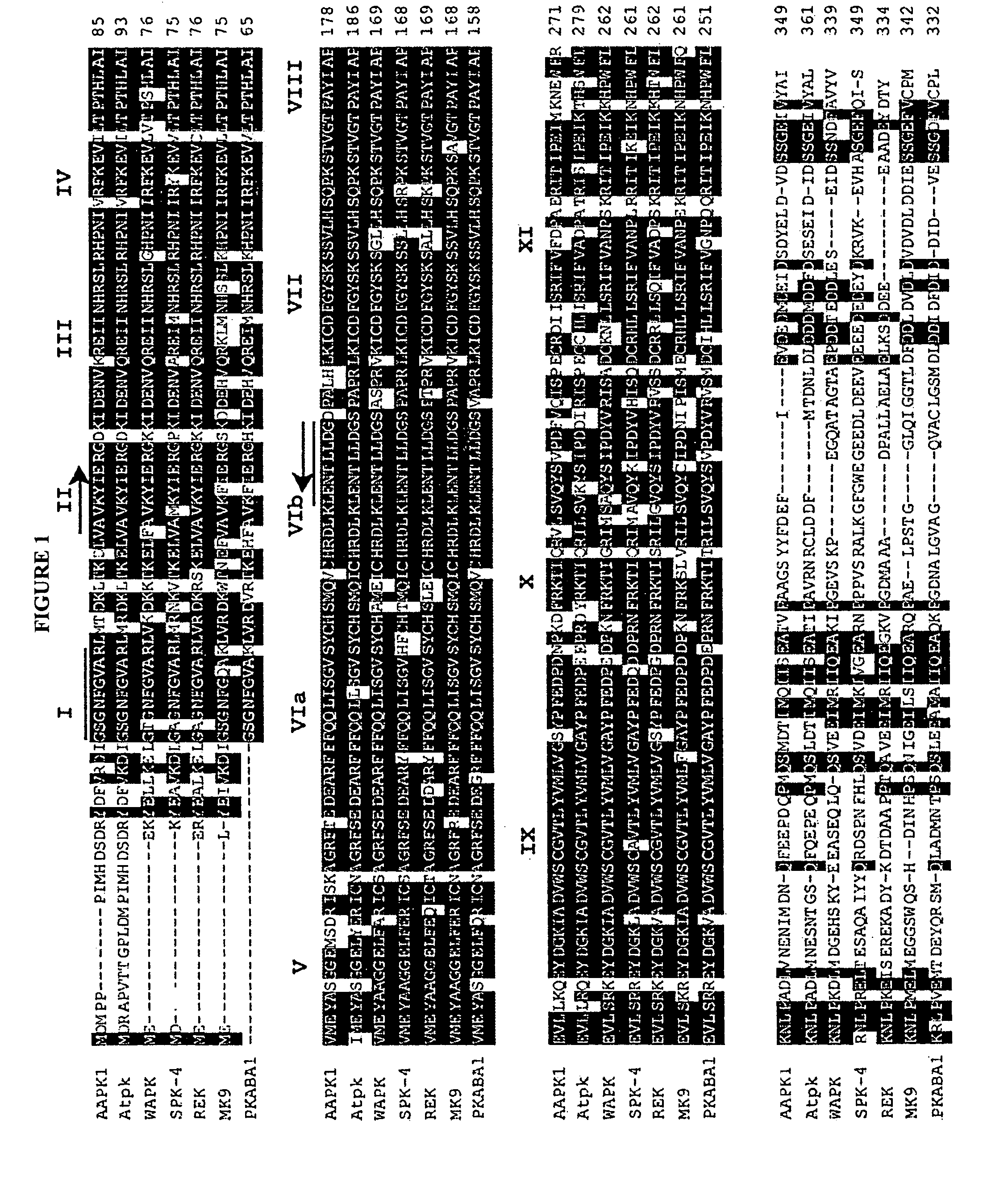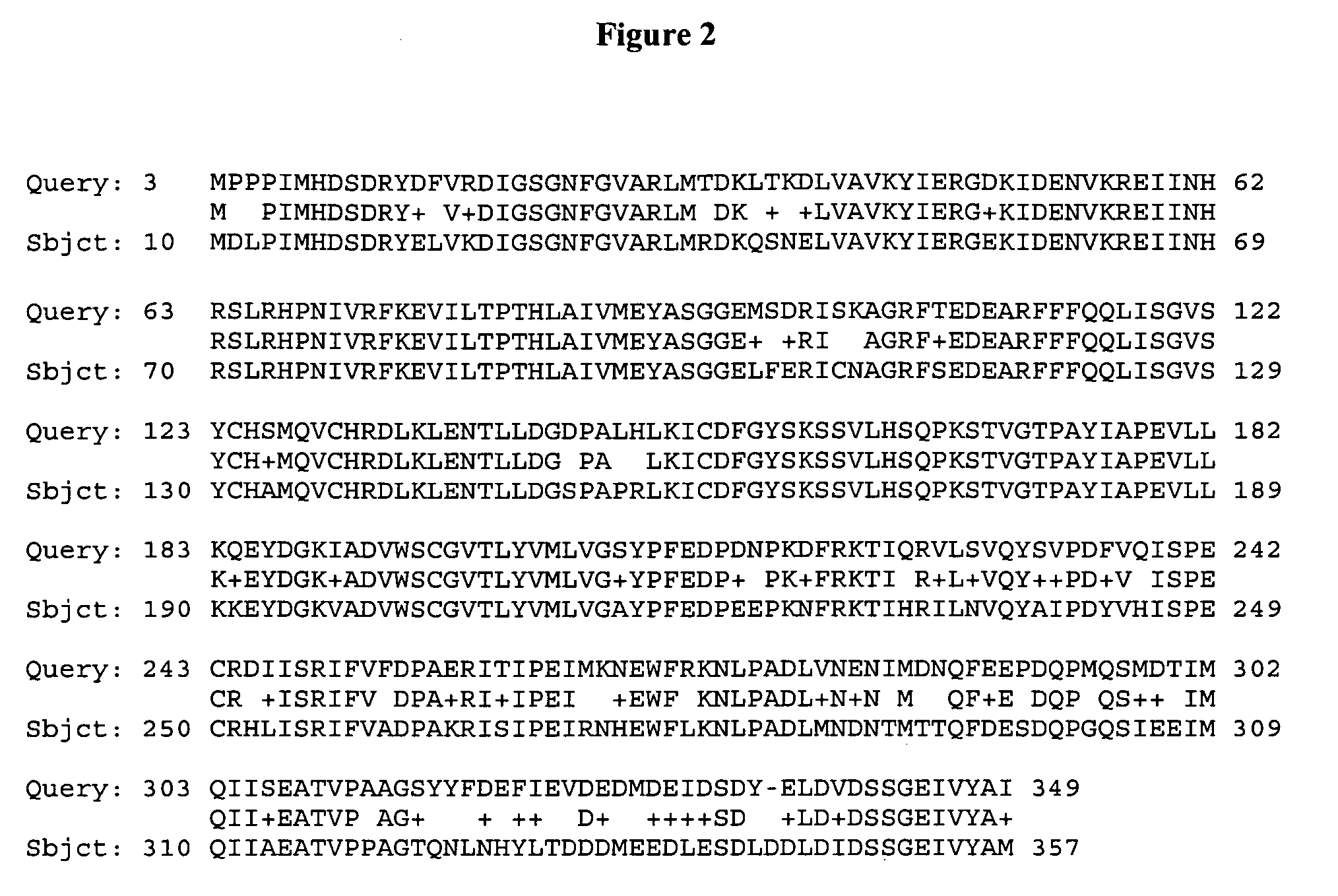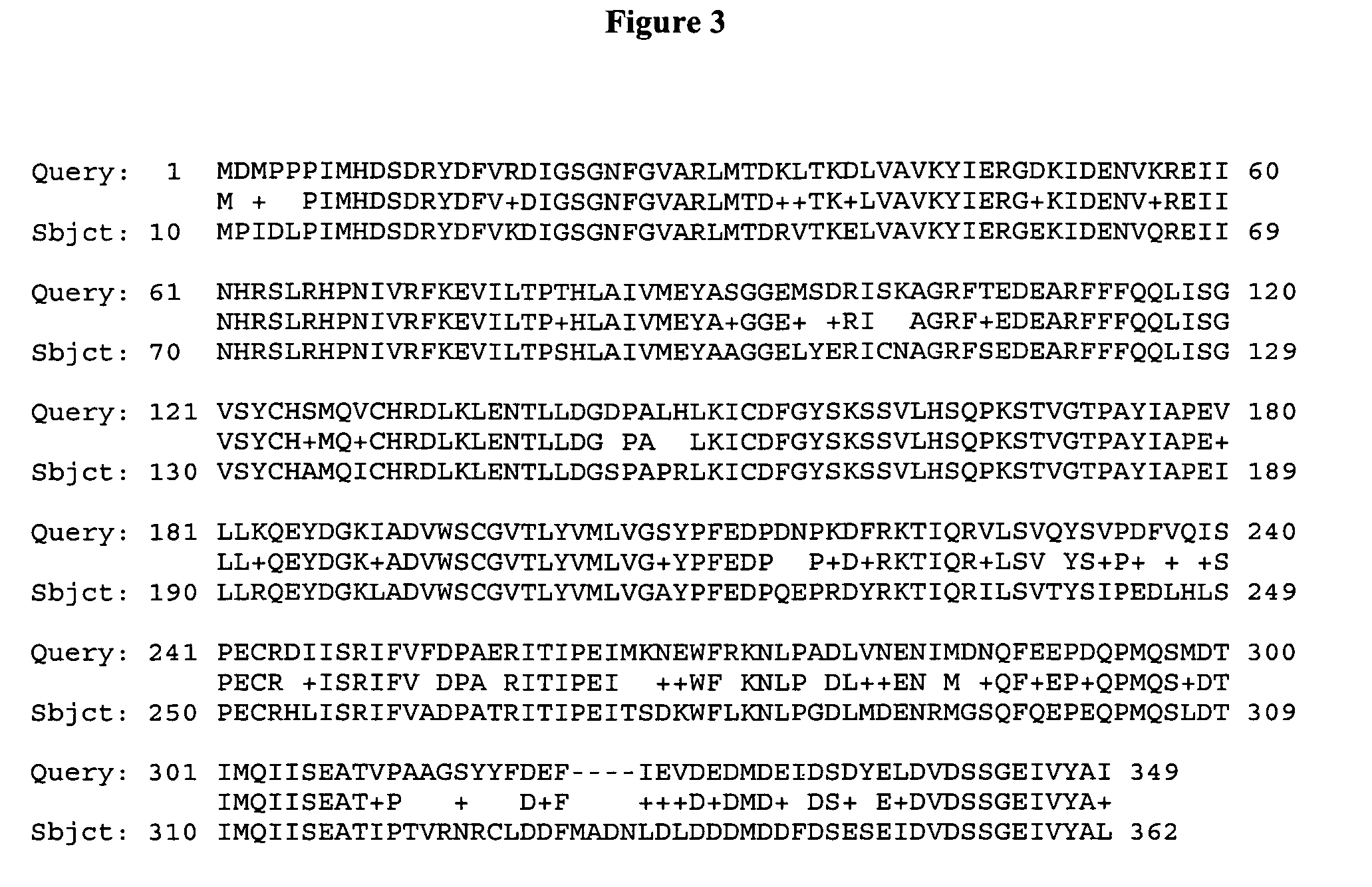Compositions and methods for regulating abscisic acid-induced closure of plant stomata
a technology of abscisic acid and plant stomata, applied in the field of molecular biology of plants, can solve the problems of limiting the stomatal aperture, reducing limiting the aba-mediated limitation of water loss, so as to reduce the sensitivity of the plant to aba-induced stomatal closure, reduce the function of an aapk, and increase transpiration
- Summary
- Abstract
- Description
- Claims
- Application Information
AI Technical Summary
Benefits of technology
Problems solved by technology
Method used
Image
Examples
example 1
Cloning and Characterization of ABA-Activated Protein Kinase-Encoding cDNA from Guard Cells
[0117]This example describes the cloning and characterization of a Vicia faba complementary DNA, AAPK, encoding a guard cell-specific ABA-activated serine-threonine protein kinase (AAPK).
Methods
[0118]Isolation and Identification of ABA-Activated Protein Kinase (AAPK). Guard cell protoplasts (2×106; 99.6% pure) were prepared from Vicia faba. Protoplasts were treated with either darkness, ABA or elevated CO2 concentrations prior to protein isolation. Protoplast proteins were extracted and subjected to 2-dimensional gel electrophoresis. Separation was via 12% SDS-polyacrylamide gel electrophoresis (SDS-PAGE). Kinase autophosphorylation activity of subsequently renatured proteins was detected by established methods.
[0119]The AAPK protein was excised from the 2-D gels (first dimension, nondenaturing PAGE) after digestion with trypsin. The AAPK peptides generated by trypsin digestion were subjected ...
example 2
Identification of AAPK Genes from Arabidopsis thaliana
[0143]Screening. Standard methods known to those skilled in the art for screening a genomic library were used. An Arabidopsis genomic library from CD4-8 Landsberg erecta from the Arabidopsis Biological Resource Center at Ohio State University was used.
[0144]The probe was the Nco I-Bgl II fragment (393 base pairs) of V. faba AAPK cDNA. The gel-purified Nco I-Bgl II fragment of AAPK cDNA was labeled by 32P-dCTP. This probe corresponds to sequences encoding the region from the aspartic acid residue (position 2, SEQ ID NO:2) to the arginine residue (position 132, SEQ ID NO:2) of the AAPK protein.
[0145]Nylon membranes containing the library were prehybridized with 5×SSC, 5× Denhardt's solution, 1% SDS, and 0.2% nonfat milk at 60 C for 2 hours and then hybridized in the same solution with the labeled probe at 60 C overnight. The membranes were washed with 2×SSC and 0.1% SDS twice for 15 minutes at 60 C, once in 2×SSC and 0.1% SDS, and...
PUM
| Property | Measurement | Unit |
|---|---|---|
| Tm | aaaaa | aaaaa |
| temperature | aaaaa | aaaaa |
| temperature | aaaaa | aaaaa |
Abstract
Description
Claims
Application Information
 Login to View More
Login to View More - R&D
- Intellectual Property
- Life Sciences
- Materials
- Tech Scout
- Unparalleled Data Quality
- Higher Quality Content
- 60% Fewer Hallucinations
Browse by: Latest US Patents, China's latest patents, Technical Efficacy Thesaurus, Application Domain, Technology Topic, Popular Technical Reports.
© 2025 PatSnap. All rights reserved.Legal|Privacy policy|Modern Slavery Act Transparency Statement|Sitemap|About US| Contact US: help@patsnap.com



